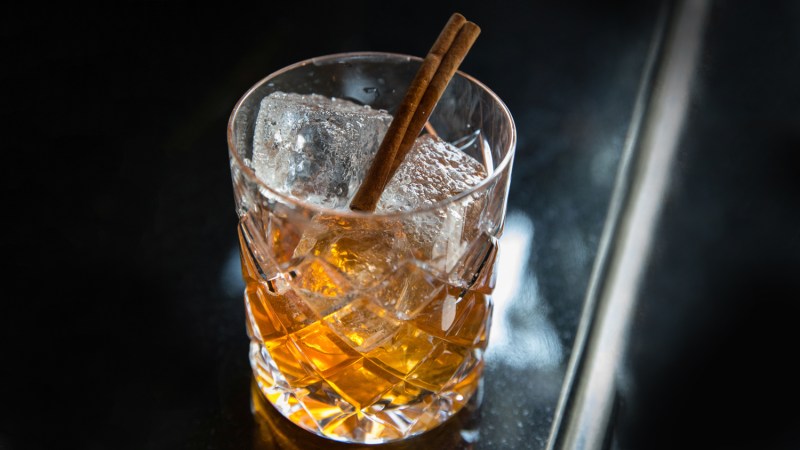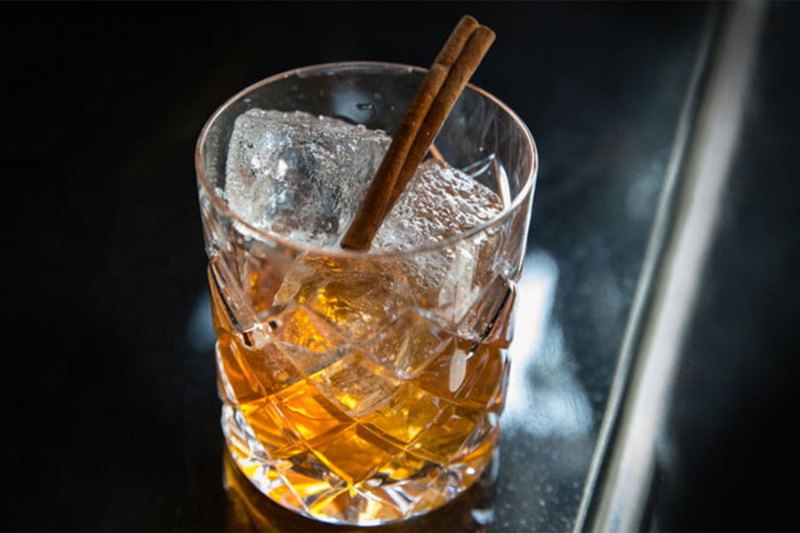

Arboleda said he first heard of fat-washing from Don Lee of PDT in New York City, who used a bacon fat wash in bourbon to make the now-classic cocktail, Benton’s Old Fashioned. The trend as a whole, according to Arboleda, was inspired by Pastry Chef Sam Mason of the now-closed molecular gastronomy restaurant WD-50. Arboleda himself has been experimenting with the technique for about two years now, drawing inspiration from the restaurant itself.
“We age our meat for 40 days in-house, so the meat here is a big deal. With the meat cocktails, I wanted to pay homage to what it is — our bread and butter,” he said. “Trying to figure the technique myself took a lot of trial and error, but I think at this point I can say my fat-washing abilities are where they should be.”
Arboleda added that beyond meat fats, he typically uses butter with rums and nut oils in gins.

To fat wash, you first need to (obviously) figure out what sort of fat to use. Arboleda says he likes to use duck or bacon fat, but other animal fats or items like peanut butter or sesame seed oil work just as well. What it comes down to is the type of spirit you plan to use and what you’re trying to accomplish.
“I use a duck infusion for rye because the spiciness of the rye with the sweetness of the duck fat pairs better than with other spirits I have used before. I think the bitters, sugar, and absinthe coexist together beautifully with the duck-fat infused rye for our Duck, Duck, Goose Cocktail,” he said.
“For bacon fat infusions, I feel that the sweetness of the bourbon and the smokiness of the bacon go well together. This is why I use a pineapple-infused sweetener in our Maxwell’s Old Fashioned to invoke the whole ‘smoking a pig with pineapple in a backyard with your friends’ kind of feeling.”

Once you’ve picked your fat, take two ounces of it, rendered, and put it into a quart container with 750ml of your chosen spirit. Leave it in a dark, warm space for six hours — this will let the fat melt into the spirit. Next, put the container in the freezer for three hours. When put in the freezer, much of the fat will solidify as a layer on top of the booze. The next step, straining, is the most important and also the one where you have to be most careful, according to Arboleda. Remove the solid layer of fat from the top then put a cheesecloth in a Chinois strainer and slowly strain the liquid.
Voila. Fat-washed spirits. You’ve combined two of the greatest things on this planet — booze and meat — and now all you have to do is figure out what to do with your newfound power. You could invite friends over and lord it over them with mind-blowing bacon Old Fashioneds, or you can keep it all to yourself. Choose wisely.
Article originally published on May 18, 2017, while Arboleda was at Maxwell’s Chophouse in New York City.
Editors' Recommendations
- These terrific mocktails are perfect for Dry January
- This is What Distillers are Drinking Right Now
- Celebrate Oktoberfest With These 10 German Spirits And Liqueurs
- Swap Out Your Eggnog for Milk Punch This Holiday Season
- What Is Ultrasonic Homogenizing and What Does It Have to Do With Cocktails?




